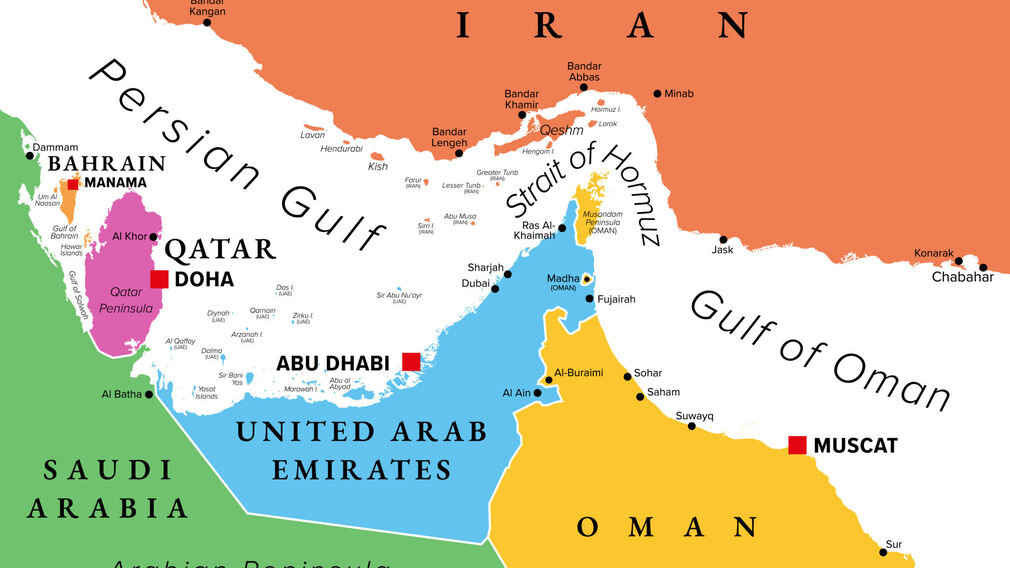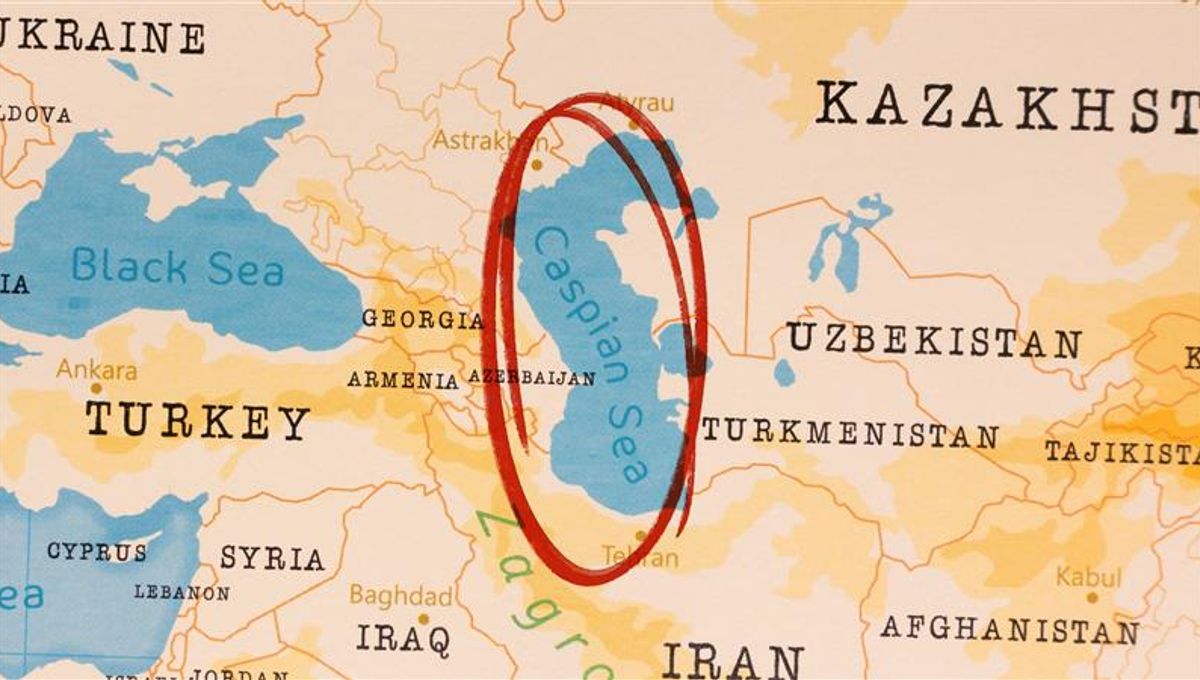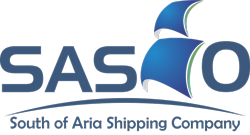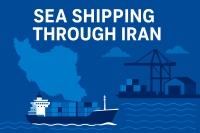Why Iran is a Strategic Sea Shipping Route
Iran’s geographical position grants it significant strategic importance in sea shipping through Iran, particularly through its control over the Strait of Hormuz, a vital chokepoint for marine shipping, and its access to the Caspian Sea, a key hub for regional sea freight. While Iran itself is not a shipping route, its location bordering the Persian Gulf, the northern side of the Strait of Hormuz, and the southern shores of the Caspian Sea positions it as a pivotal player in Iran’s maritime transport networks. This dual advantage allows Iran to influence or leverage two critical waterways for oil, liquefied natural gas (LNG), and broader sea shipment.

The Role of the Strait of Hormuz
The Strait of Hormuz connects the Persian Gulf to the Gulf of Oman and the Arabian Sea, serving as the primary exit point for petroleum from major producers like Saudi Arabia, the UAE, Kuwait, Iraq, and Iran itself. It handles approximately 20% of global oil consumption (around 17-20 million barrels per day), 19% of natural gas, and 15% of petroleum products through the Persian Gulf region. This makes it indispensable for global energy security. Beyond energy, the strait supports broader maritime trade, including containerized goods, though oil and LNG dominate. Alternatives to the strait exist but are limited: for instance, the UAE's Fujairah pipeline bypasses it for some oil, but it can't handle global demand and remains vulnerable. Proposed overland pipelines through other countries would take years to develop and face their own risks.

The Caspian Sea's Strategic Importance
In addition to its dominance in the Persian Gulf, Iran's position along the southern coast of the Caspian Sea further enhances its strategic maritime influence. The Caspian Sea, bordered by Iran, Russia, Kazakhstan, Turkmenistan, and Azerbaijan, is a vital region for energy resources and trade. Iran's Caspian coastline facilitates trade with Central Asian and Caucasian countries, as well as Russia.
The Caspian Sea serves as a complementary trade corridor for Iran, enabling it to diversify its maritime influence beyond the Persian Gulf. Ports such as Bandar Anzali and Nowshahr support the transport of goods, including energy products, agricultural commodities, and industrial materials, to and from Caspian states. The sea also connects to broader trade networks through the Volga-Don Canal, which links the Caspian to the Black Sea and, subsequently, global markets.
Moreover, Iran's involvement in Caspian Sea trade strengthens its geopolitical leverage. By fostering economic ties with Caspian neighbors, Iran can counterbalance Western sanctions and build strategic alliances. The development of rail and port infrastructure, such as the International North-South Transport Corridor (INSTC), further integrates Iran's Caspian ports with its southern Persian Gulf ports, creating a seamless trade route from Central Asia to the Indian Ocean. This connectivity amplifies Iran's role as a pivotal hub in both maritime and overland trade networks.
Key Ports and Shipping Routes in Iran
Major ports are divided into southern ports on the Persian Gulf, ideal for oceanic routes, and northern ports on the Caspian Sea, connecting to Central Asia.
Iran Southern Ports
These ports dominate Iran's sea freight operations, handling the bulk of the country's trade. Shahid Rajaee Port, the country's main deep-water port near the Strait of Hormuz, processes over 75–80 million tons of cargo yearly, including containers, oil, and general goods (iccci.ir). It features Shahid Rajaee terminal, which manages four-fifths of container traffic, linked by rail to Tehran and Mashhad. Bandar Imam Khomeini, the northernmost Gulf port, specializes in petrochemicals, grains, and bulk cargo vessels. Connected by rail to Ahvaz and Tehran, it exports alumina, sulfur, and iron ore via the Khor Musa channel. Other notables include Chabahar, Iran's oceanic port on the Gulf of Oman, with direct Indian Ocean access for 8.5 million tons capacity (irannewsdaily).
Iran Northern Ports
These support regional sea shipping through Iran, focusing on multipurpose cargo. Bandar Anzali, the principal facility, spans 68 acres with 10 berths for 5,000-ton ships, exporting fruits, nuts, and imports like timber and steel. Amirabad, the largest Caspian port, handles 7.5 million tons via 15 berths (totalnews), integrated with the International North-South Transport Corridor (INSTC). Nowshahr serves as a resort-cum-port for perishables and minerals.
Common Routes to Europe and Asia
To Asia, routes from southern ports such as Bandar Abbas and Chabahar facilitate sea connections through the Arabian Sea to major Asian markets including India and China, supporting regional trade under initiatives like China’s Belt and Road. The Chabahar–Zahedan railway, currently under construction, aims to link the port to Iran’s national rail network and further toward Afghanistan and Pakistan, providing an alternative corridor that bypasses Gwadar. In the north, Iran’s Caspian ports connect via ferry routes to Aktau (Kazakhstan), enabling overland transport to Uzbekistan and Turkmenistan, highlighting the country’s growing role as a multimodal transport hub across Asia.
For Europe, the INSTC offers a 7,200-km multimodal path: sea shipping through Iran from Bandar Abbas to Caspian ports, then rail through Azerbaijan or Armenia to Russia, cutting Suez times by half (19–23 days vs. 32-37) (artarail.com). Alternatives include Iran-Turkey corridors to Istanbul, then Europe, or the Persian Gulf–Black Sea route via Volga-Don Canal. These routes strengthen Iran's maritime transport resilience amid sanctions, cutting trade custs by 30% in energy and goods (reconasia.csis,moderndiplomacy,maritimeducation).
Overall, sea shipping through Iran offers businesses a strategic and reliable option for connecting major markets across Asia and Europe.
Advantages of Sea Shipping through Iran
Sea shipping through Iran provides a strategic connection between Asia, the Middle East, and Europe. By leveraging Iran's maritime transport network, businesses can shorten transit times, access multiple ports, and integrate rail and sea logistics for smoother operations. Companies utilizing sea shipping through Iran gain flexibility in planning and can explore alternative trade routes beyond conventional maritime corridors.
Key advantages of sea shipping through Iran:
- Time and Cost Savings: Shorter routes via Iran's maritime transport, such as the International North-South Transport Corridor (INSTC), can reduce transit times to Europe by 25–40%, lowering fuel and operational costs.
- Flexible Logistics Planning: Multiple southern and northern ports, combined with rail links, allow adaptable routing and scheduling.
- Reduced Risks Compared to Longer Routes: sea shipping through Iran avoids congestion and some geopolitical risks associated with longer traditional maritime routes.
For more information read “Cost-Effective Cargo Transit via Iran: Full Guide” and ”Overview of Freight Forwarding in Iran”
Challenges and Considerations of Sea Shipping through Iran
While sea shipping through Iran offers clear benefits, businesses must understand several factors to ensure smooth operations within Iran's maritime transport network.
Main Challenges of sea shipping through Iran include:
- Customs and Regulatory Requirements: Understanding documentation, tariffs, and compliance with local and international regulations is essential for sea shipping through Iran.
- Seasonal and Weather Conditions: Storms in the Persian Gulf, Gulf of Oman, or Caspian Sea can temporarily disrupt Iran's maritime transport, especially for sensitive or perishable cargo.
- Coordination with Reliable Marine Companies: Partnering with experienced providers ensures compliance, cargo safety, and timely delivery while navigating Iran's maritime transport efficiently.
How to Choose the Right Marine Company
When sea shipping through Iran, selecting the right marine company is essential for smooth and reliable operations. A reputable provider ensures that your cargo moves efficiently through Iran's maritime transport network, complying with all regulations and handling requirements.
Key Considerations:
- Reliability and Track Record: Choose companies with proven experience in sea shipping through Iran, strong safety records, and positive customer feedback.
- Support Services: Ensure the provider offers comprehensive support, including documentation, customs assistance, and real-time shipment tracking.
- Compliance with International Standards: The company should adhere to global maritime regulations and best practices to minimize risk when navigating Iran's maritime transport routes.
Partnering with the best international freight forwarder in the Middle East ensures that your goods reach their destination safely, on time, and in full compliance with local and international standards, maximizing the advantages of sea shipping through Iran.
Practical Tips for Optimizing Sea Shipping through Iran
Maximizing the benefits of sea shipping through Iran requires careful planning and attention to the unique aspects of Iran's maritime transport network. By understanding the routes, ports, and seasonal considerations, businesses can ensure smoother operations and avoid delays.
Practical Tips:
- Plan Around Key Ports: Utilize major southern ports like Bandar Abbas and Chabahar, as well as northern Caspian ports, to optimize routing and transit times when sea shipping through Iran.
- Monitor Seasonal and Weather Conditions: Track storms and seasonal patterns in the Persian Gulf and Caspian Sea to minimize disruptions in Iran's maritime transport.
- Coordinate with Reliable Marine Companies: Work with the best freight forwarder in Iran to handle documentation, customs, and multimodal transport efficiently.
- Leverage Rail-Sea Integration: Combine port access with rail connections to Tehran, Mashhad, or other inland hubs to reduce overall transit time and improve logistics flexibility.
Following these tips helps businesses make the most of sea shipping through Iran, ensuring faster, safer, and more reliable delivery while fully leveraging the country’s strategic maritime position.
Streamlined Sea Freight with SASCO: Reliable Sea Shipping Through Iran
As a shipping Agent in Iran, SASCO, a leading marine shipping service Co. and one of the best NVOCC in Iran, simplifies sea shipping through Iran for regional and international trade. Companies can rely on SASCO to handle sea freight efficiently from Iran to destinations such as the United Arab Emirates, Turkey, and Central Asian markets. Operating through major southern ports like Bandar Abbas and Chabahar, as well as northern Caspian gateways, SASCO coordinates sea freight and combined shipping services seamlessly. By partnering with SASCO, businesses benefit from expert handling of documentation, customs clearance, and integration with Iran's maritime transport networks, ensuring reliable and timely sea shipments.







